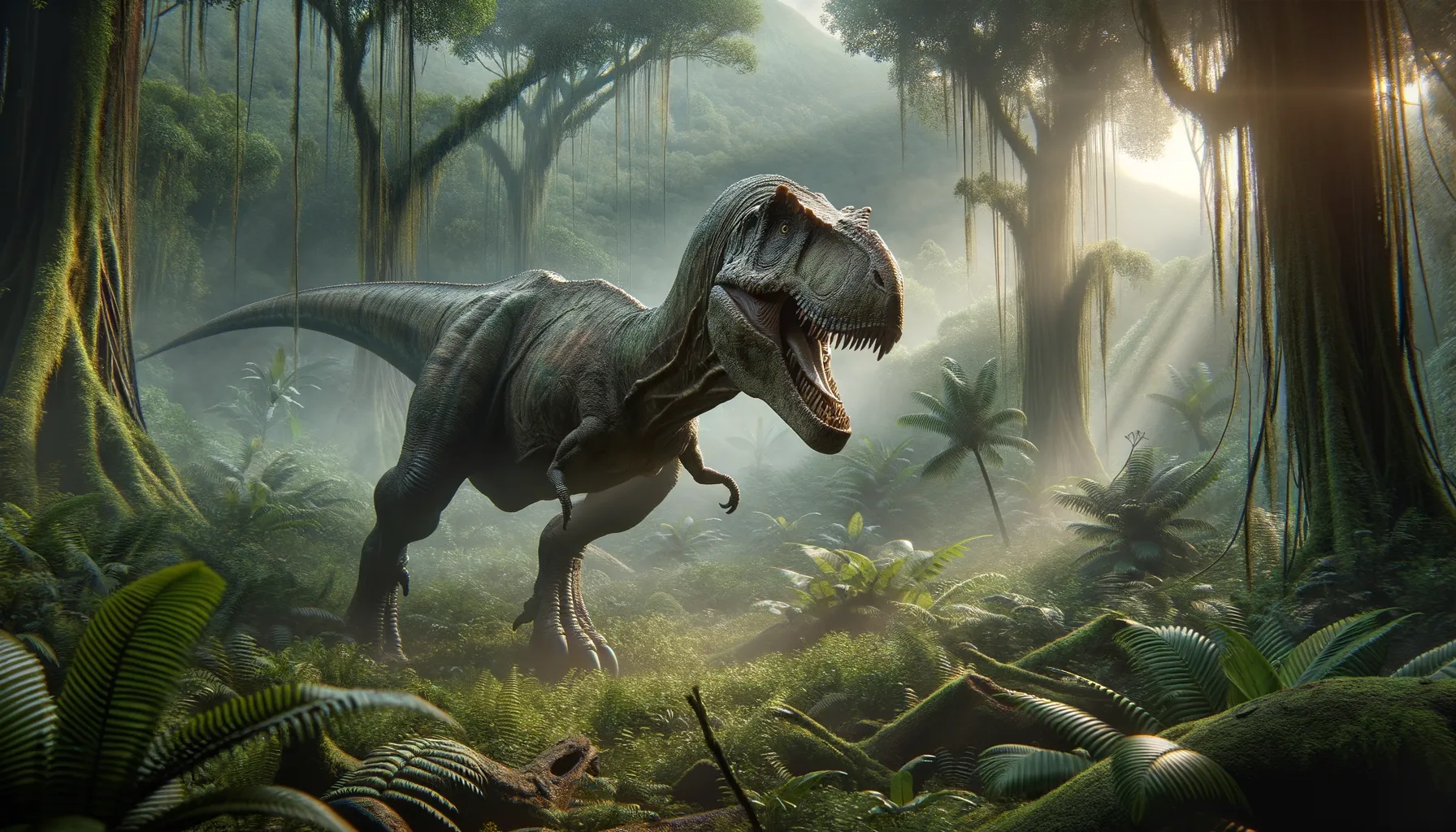
Creosaurus
Jurassic predator with a stealthy strike!
Period
Jurassic
Length
Approximately 20 feet long.
Height
Around 6 feet tall.
Weight
Approximately 1 ton.
Creosaurus was a carnivorous dinosaur that roamed the Earth during the Jurassic period. It resembled other theropods with a large head, sharp teeth, and strong hind limbs. Although its fossils remain relatively scarce, it plays a significant role in understanding the diversity of predatory dinosaurs of its time. Creosaurus likely inhabited forested regions, taking advantage of the lush vegetation to ambush prey.
Diet
Creosaurus was a meat-eater, primarily feeding on smaller dinosaurs and potentially scavenging leftovers from larger predators. Its diet would have included both solitary hunting and opportunistic feeding habits.
Hunting
Creosaurus likely relied on stealth and ambush tactics to catch its prey, using its moderate speed as an advantage in forested areas. It would have focused on young or weakened animals to compensate for its size compared to other larger predators.
Environmental challenges
As a mid-sized predator during the Jurassic, Creosaurus faced competition from larger carnivores. Its survival hinged on effective hunting strategies and avoiding direct confrontations with larger predators. The changing climate and shifting ecosystems also presented challenges, requiring adaptability in diet and habitat.
Speed
Moderate speed, adapted for ambush.
Lifespan
Estimated to be 25 to 30 years.
First discovery
Discovered in the late 19th century.
Fun Facts
- Creosaurus was a theropod dinosaur that lived during the Late Jurassic period, around 150 million years ago.
- Despite its intimidating appearance, Creosaurus was relatively small for a meat-eating dinosaur, measuring about 7 to 9 meters in length.
- Like many theropods, Creosaurus was a biped, meaning it walked on two legs and likely had a very active lifestyle.
- Creosaurus had sharp teeth and claws, indicating it was a carnivore that preyed on other dinosaurs.
- Its name 'Creosaurus' means 'Flesh Lizard', which reflects its diet and carnivorous nature.
- Some paleontologists believe Creosaurus might have been fast and agile, capable of quick movements to catch its prey.
- Interestingly, Creosaurus fossils have been found primarily in what is now North America.
Growth and Development
Creosaurus grew rapidly after hatching, likely reaching near-adult size within the first few years. As it aged, its growth would slow down, focusing more on maintaining health and reproductive capabilities. This species likely experienced a high mortality rate in juvenile stages due to predation.
Habitat
Preferring lush, forested environments, Creosaurus would have used trees and foliage for cover during hunting. The dense vegetation provided not only concealment but also a habitat rich in prey. Its habitat choices would have been influenced by the availability of food and the presence of competing predators.
Interaction with other species
Creosaurus coexisted with both herbivorous and other carnivorous dinosaurs, often competing for resources. While primarily a solitary hunter, it might have formed temporary associations with others of its kind during mating season or when food was abundant. Interactions with larger predators would generally involve avoidance to minimize risk.
Natural lifespan
The natural lifespan of Creosaurus is estimated to be around 25 to 30 years.
Reproduction
Reproduction likely involved laying eggs in a hidden nest, similar to other theropods. Parental care might have included guarding the nest to ensure offspring reached the hatchling stage. Seasonal breeding patterns could have aligned with environmental conditions to increase hatchling survival chances.
Social behaviour
Creosaurus probably led a mostly solitary life, with social interactions mostly occurring during mating season. Temporary group formations may have occurred if resources were especially plentiful, though these were likely not long-lasting. Social hierarchies, if any, would revolve around access to mates and territory rather than group living.
Fossil locations
Fossils of Creosaurus have been predominantly found in North America, suggesting a habitat range across the western regions. These fossil discoveries provide crucial insights into the paleoenvironments of the Jurassic period. The scattered nature of these finds indicates it was not as widespread as some of its contemporaries.
